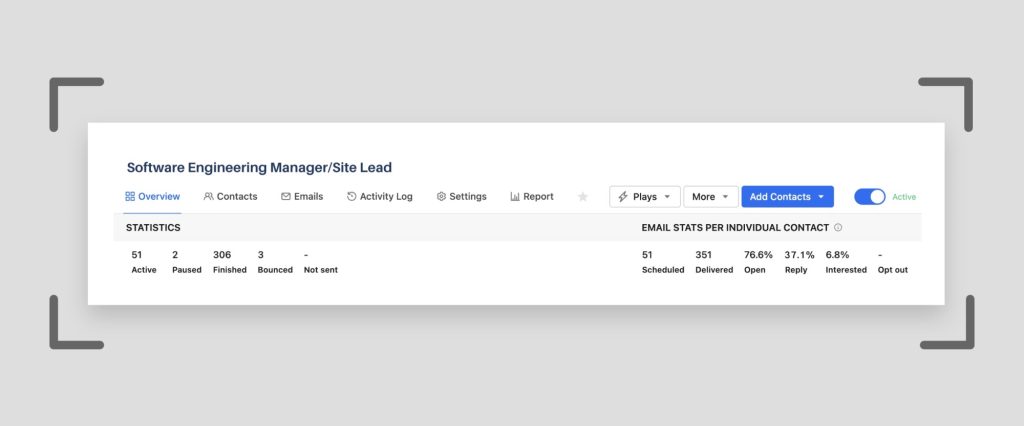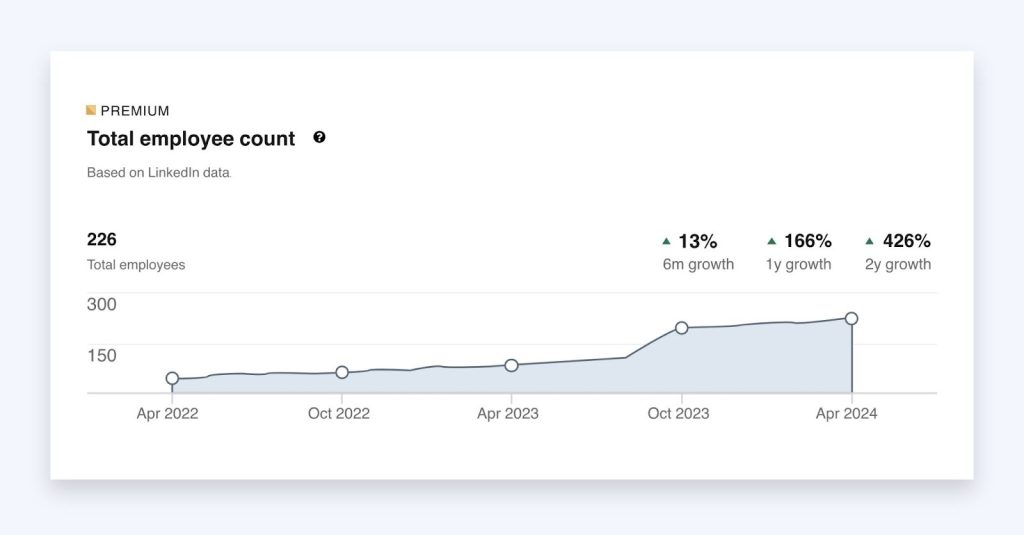The Fishbowl app created by Matt Sunbulli created instant hype in the talent market, especially for one of their social media ads, where an employee negotiates the raise based on the organization’s employee appraisal and salary reviews on the app.
A raise is part of the employee cycle! The app also serves as a community for the talent pool to search about work culture, employee engagement, and non-technical aspects of organizations. It has captured this very need of candidates to seek more information about an organization before they apply for a job.
Glassdoor acquired the app in 2021 because its goal resonated with them to be committed to providing an open and honest platform for workplace discussion.
In such a scenario where, according to studies by LinkedIn, 75% of job seekers consider an organization’s reputation and employer brand before even applying, organizations need to be more transparent and honest about their EVP.
The point is that EVP has traditionally been part of a high-level management, marketing, branding, and organizational development team’s work. So, how does a Sourcer add value to build an EVP?
Let me start by sharing my experience while sourcing talent for my clients.
Talent Sourcer as a Frontliner:
A candidate embarks on their journey with a company by interacting with a sourcer. As the first point of contact, sourcers don the mantle of brand ambassadors, tasked with crafting the initial impression that sets the tone for the candidate’s entire experience.
Hence, I practice making a solid impression on potential candidates when reaching out, be it any medium, and statistics strongly agree with me, as according to Zippia, a career exploration platform, 78% of candidates say their experience indicates how the company values its employees.
My primary mode of reaching out to candidates is LinkedIn or Email. As my niche is the tech industry, I also connect with them through other tech-savvy platforms.
I define demographic groups and their distinct preferences and priorities when seeking employment. Recent graduates may prioritize opportunities for growth and development, while seasoned professionals may value stability and work-life balance. By tailoring your employer branding messages to resonate with specific talent pools, you can effectively attract the best-fit candidates and improve engagement levels within your workforce.
Here’s one example of how I reached out to a candidate for a SaaS product company looking for a Director-level opportunity, a software engineering manager as a site lead. Debbie had an extensive six-year tenure at a SaaS startup, marked by two promotions and her recent two-year experience as an Engineering Manager, demonstrating a solid track record of leadership and expertise within the industry.
Here’s how I approached her with a customized message on LinkedIn.
“Hi, Debbie,
I happened to review your post on LinkedIn, which said: “Diversity refers to the presence of a wide range of human differences, including but not limited to race, ethnicity, gender, sexual orientation, age, socioeconomic status, physical abilities, religious beliefs, political beliefs, and other ideologies.” Well, I couldn’t agree more. Our company shares the same ideology, and we intend to hire leaders for our tech team who will promote diversity wholeheartedly.
In a 15-minute chat, I could tell you more about our diversity initiatives and the goals we are striving to achieve. Even if you are not interested, it would be great to network with you.
Regards,
[your name]”
The message resonates with the candidate’s ideology and brings out the positive side of the organization, laying a foundation for further candidate engagement.
With the above email outreach strategy for a client, I have achieved a higher response rate, increasing from 23% to 37.1%. Here are real-time insights on customizing the outreach to match the candidate’s expectations and employer brand/employee value proposition to increase the response rate.

Beyond reciting job descriptions and technical requirements, they serve as torchbearers of the organization’s work culture. Understanding the nuances of organizational ethos enables them to effectively convey the essence of working within the company, laying the foundation for a meaningful connection between the candidate and the brand.
Talent Sourcer as Talent Magnets:
Big brands naturally attract more talent with their trustworthiness and better benefits & compensation. The challenge lies when there’s no presence of the company that wants to establish its operations in the new region, which is a startup or a mid-size organization. These organizations are already competing with the sharks, where attracting talent becomes difficult.
Employers with a strong brand receive 50% more qualified talent leads.
Now, how did I set my client as a talent magnet?
One of my clients, an AI Tech startup, was fresh from a successful Series A funding round of $44 million. We faced an ambitious task: to expand their team from 12 to 100 members within 12-18 months. With the clock ticking, we dedicated our first three months to narrating our client’s compelling story and ambitious goals through our outreach program. Leveraging the impressive backgrounds of the founders and team members, we laid the foundation for credibility.

As time progressed, our efforts bore fruit as the startup’s brand gained traction within the AI community, resulting in a noticeable surge in the number of applicants eager to join the journey.
We joined the client’s team around April 2022, and you can see how quick the team growth has been in a short period.

By adeptly narrating the brand’s narrative and accentuating its unique selling points (USPs), they can magnetize top-tier talent, enticing them with the promise of a fulfilling career journey. Every interaction becomes an opportunity to showcase the organization’s employee experience, fostering a positive candidate journey that resonates long after the initial encounter. By aligning the candidate’s expectations with the organization’s offerings, sourcers become architects of compelling EVPs that lure talent like moths to a flame.
A Vision – Talent Sourcer as a Real-time Data Provider:
At the forefront of talent acquisition, I envision sourcers as dynamic real-time data providers, shaping the future of recruitment strategies. Our mission goes beyond sourcing candidates; we proactively immerse ourselves in their world, offering recruiters primary insights gleaned from candidates and sharing their experiences and needs.
As sourcers, we serve as invaluable conduits of real-world data, enriching a company’s Employee Value Proposition (EVP) through our unique insights. Our constant interaction with candidates provides a window into their preferences, ranging from sought-after skills and compensation trends to crucial work culture preferences.
Moreover, by meticulously analyzing the recruitment funnel, we can pinpoint areas for enhancement, enabling recruiters to streamline processes and branding teams to ensure seamless candidate journeys. The role of a sourcer transcends mere recruitment; it involves an intricate competitor analysis. It encompasses delving into the whereabouts of the target audience, understanding their demographics, and meticulously pinpointing talent mapping. By engaging with potential hires, sourcers gain invaluable insights into the demands and expectations of specific audiences.
For example, LinkedIn’s Talent Insights tool enables sourcers to view data of candidates in a particular region according to company, titles, skills, industry, education, etc. It also shares data such as attrition rate at an organization.


Leveraging these insights, recruiters can attract stronger candidates, while branding teams can sculpt a compelling narrative tailored to the target talent pool, ultimately bolstering the company’s employer brand.
Conclusion
In conclusion, the role of a sourcers transcends traditional recruitment paradigms, assuming the mantle of a strategic architect in crafting an irresistible employee value proposition. By embodying the organization’s ethos, amplifying its brand narrative, and providing invaluable insights, they build a compelling EVP that fosters a culture of engagement and growth. As the linchpin of talent acquisition, sourcers wield immense influence in shaping the destiny of both candidates and companies, one interaction at a time.
